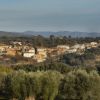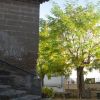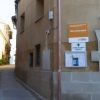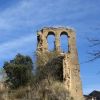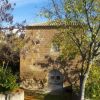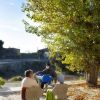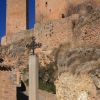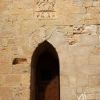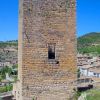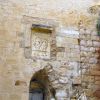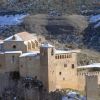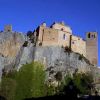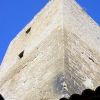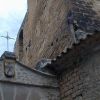Ruta de los Castillos
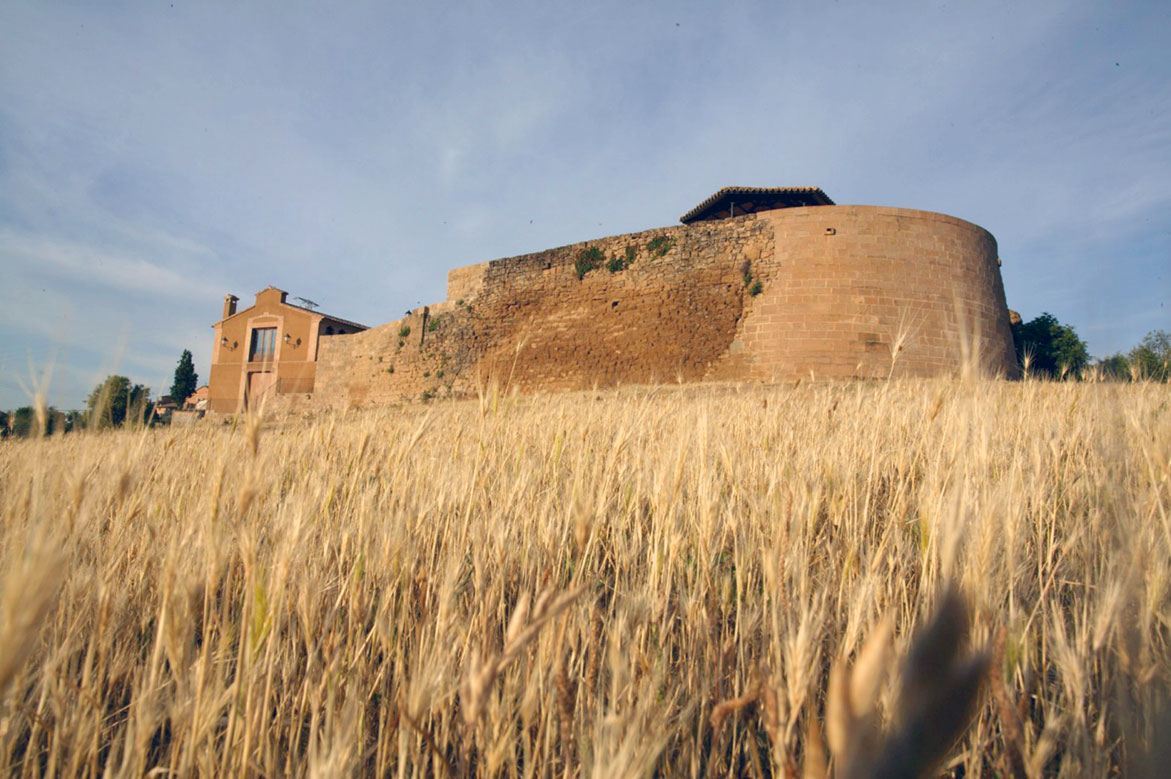
There are scant remains of an old castle that once occupied the extreme north-east of the town centre. It was erected in the year 1055 and was partly fixed to the rock. With an irregular shape, its walls were made up of huge sandstone ashlars, over 1.80 in width.
Between the ashlars that were used to build the tower it is still possible to see the marks of the stone mason; an arrow, stars and crosses.
Part of the perimeter wall can also be seen, although not at its full height.
Inside the walled enclosure there was once a primitive Romanesque church, although all remains have disappeared. However the Legends and Traditions Visitor Centre now occupies this spot.
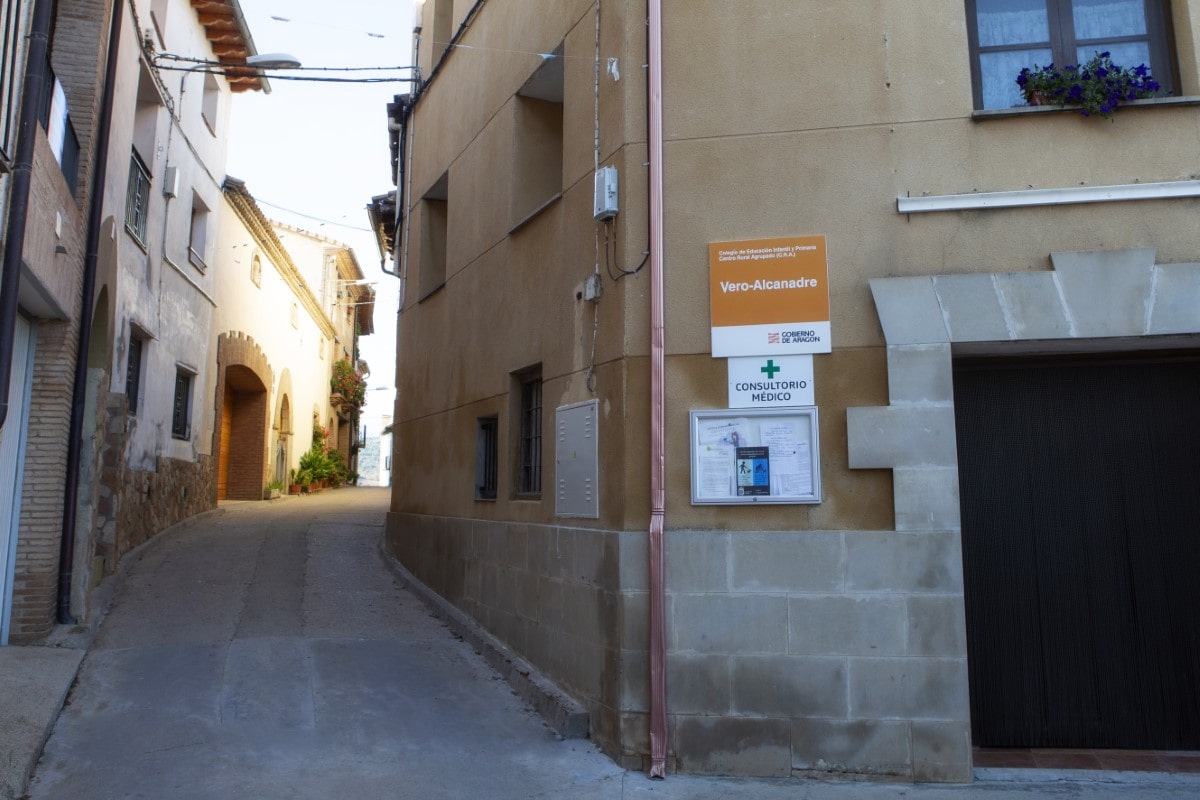
Las ruinas del castillo se alzan sobre un promontorio rocoso, poco al norte de la iglesia del San Nicolás. Quedan escasos lienzos de muralla y restos de un torreón. Una de sus torres, en la actualidad muy arruinada, fue habilitada como campanario, lo que delatan los huecos abiertos en ella para las campanas.
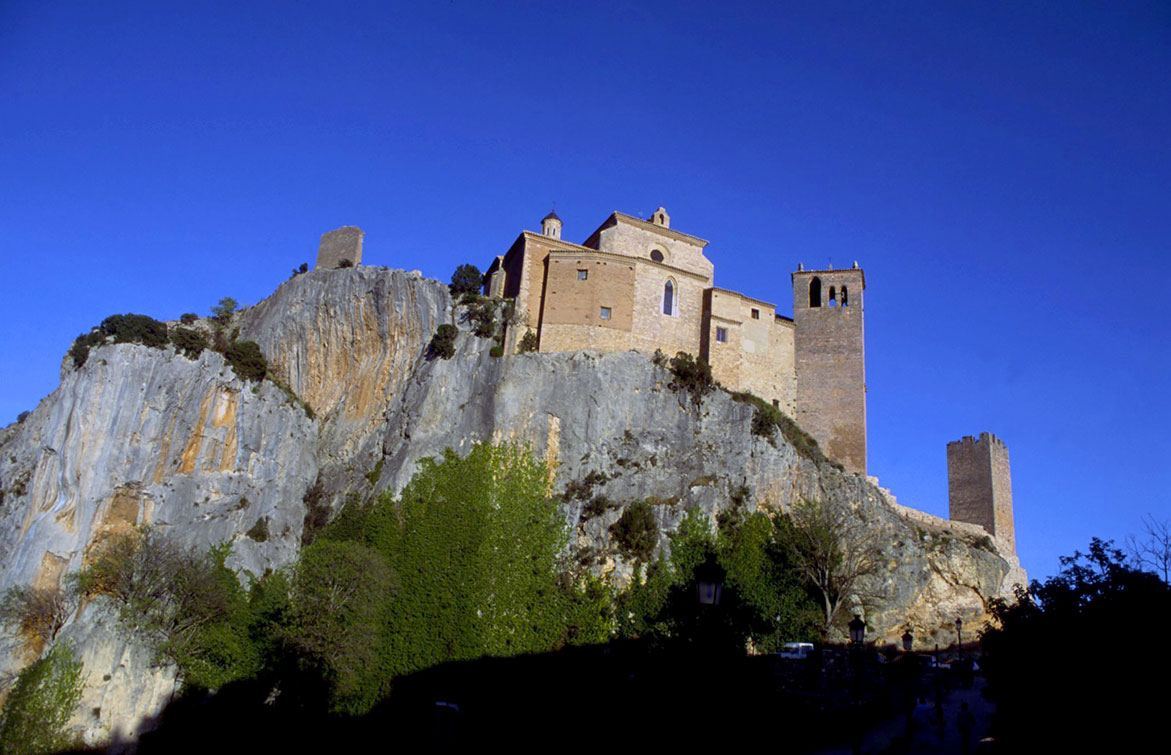
There are no remains of the fortress that Jalaf ibn Rasid commissioned at the beginning of the 9th century, except the actual location. He could not have chosen a better spot; on the highest part of a rock surrounded by sheer vertical cliffs carved by the River Vero, the fortress had a single access, which was defended by strong towers and thick walls.
When the building fell into Christian hands in 1067 during the reign of Sancho Ramirez, Abbot Banzo fortified the old Muslim castle. The king showed his appreciation by thanking him for “the good service you have done and always do and for building that tower in Alquézar for the dissemination of Christianity and the disgrace of the Moors.”
The ruins of a rectangular tower can still be seen on the highest part of the hill. Its thick walls (1.6 metres wide) were made from ashlars, and many of these were reused in walls placed to protect the almond trees of the orchard belonging to Mosen Rafael Ayerbe.
From this era there are remains of a small chapel dedicated to Santa Maria Magdalena, which had a square east end and barrel vault. These are also found on the highest part of the rocky promontory.
Access is gained by a series of successive steep ramps in the form a dog leg, which are protected by a watch tower. Building the tower outside the primitive walls of the enclosure gave a better defensive vantage point. Its construction on rock must have been a risky venture but was successfully and efficiently resolved by a group of local craftsmen who copied the magisterial method of building employed by Lombard constructors. The door was set high to further enhance protection and was reached via a wooden structure that can no longer be seen. The merlons that made up the battlements were no more than openings at the highest part of the construction where scaffolds were placed, that is to say the wooden bastion that completed the defence.
Between the 15th and 16th centuries the castle was again fortified with zigzag access to the hill via a series of crenellated walls and a blazoned doorway. On the other side was a large Gothic door with bas-relief, which was popularly know as the La Mazmorra de las Santas. This bas-relief dates back to the 15th century and shows the figures of the saints, Nunilo and Alodia, taking the hand of a martyr at the moment of their death at the hands of their executioners.
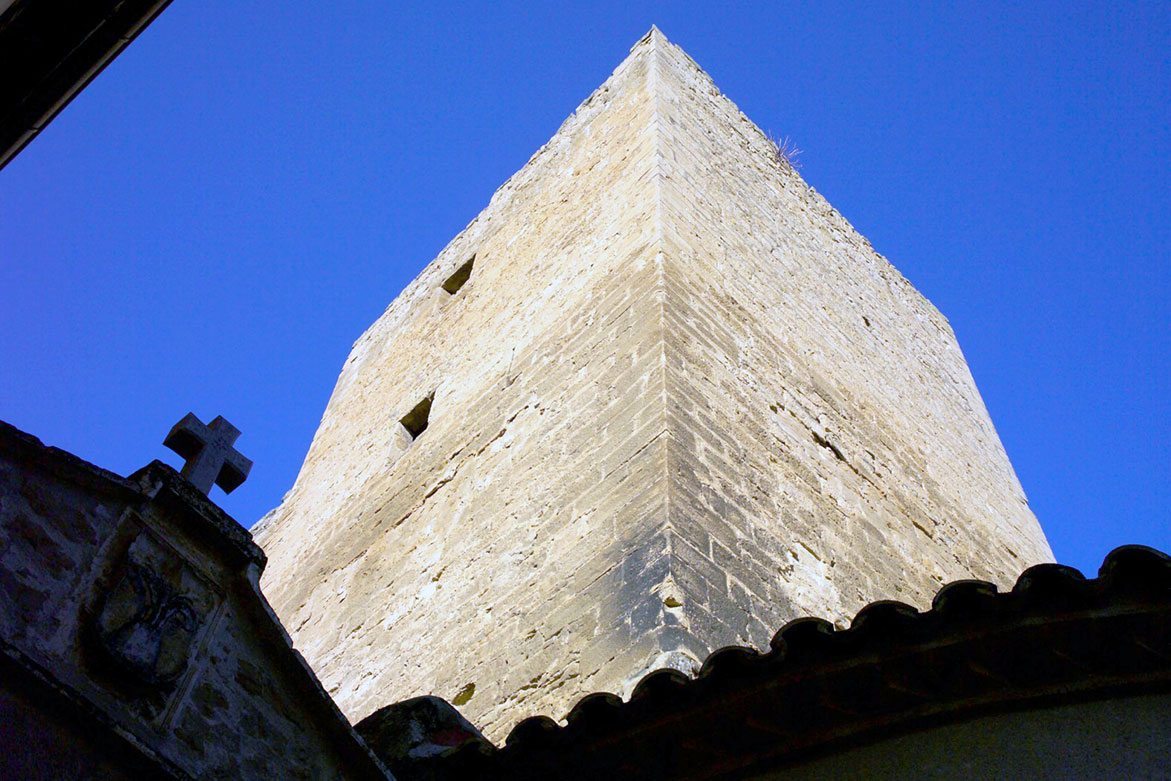
Between the 15th and 16th centuries a particular typology of castle construction was common in the region. It brought together civil and defensive elements and gave rise to fortified palaces, which extended over the lands of the gentry. They were huge and important structures, which usually had a square layout with towers at each corner and large rooms typical of a palace. Some of these were adapted to store firearms or artillery.
Their principal objective was the defence and immediate control of the possessions of the marquisate. The 16th century presented a particularly tumultuous panorama as there were many confrontations between villagers and nobility over local resources such as land, water, mountains and pasture.
This particular palace is the ancient residence of the Marquises de Artasona and is clearly defensive in character being built on a rocky platform with covered access to the centre of the village and displaying a number of arrowslits in the tower. Its integration into the village creates a delightful image set against the riverside terraces of the Cinca. Although there is documentation to record its origins as being the year 1095, the construction standing today displays 15th and 16th century renovations.
The complex has a square tower with arrowslits and a high door. This tower attached to the palace, which has various floors finished off with a gallery of arches. The enclosure was sealed off by means of an arched doorway, which at the same time provided access to the village. It bears the crest of the Claramonte family as this area belonged to their baronetcy before it passed into the hands of the Marquises of Artasona.













